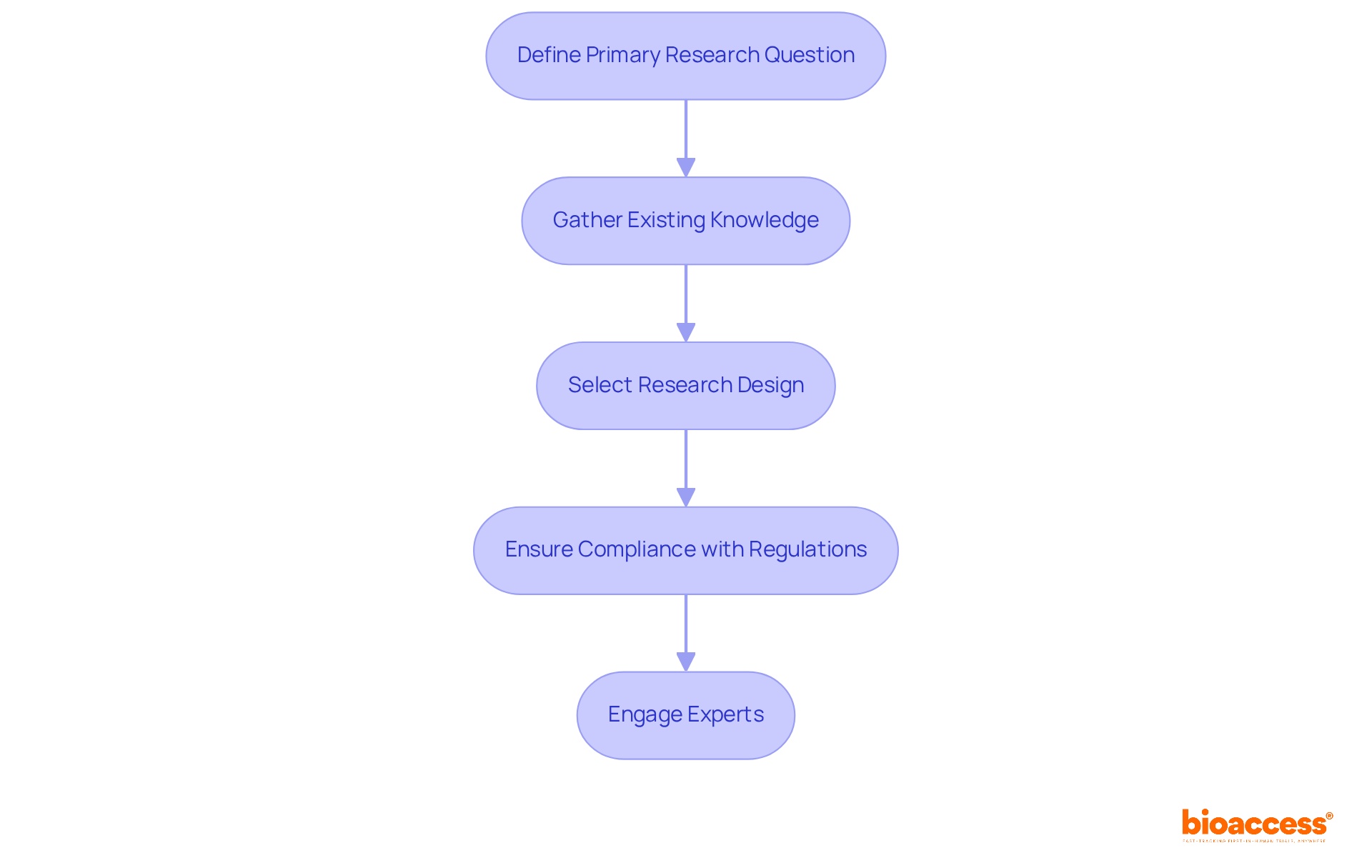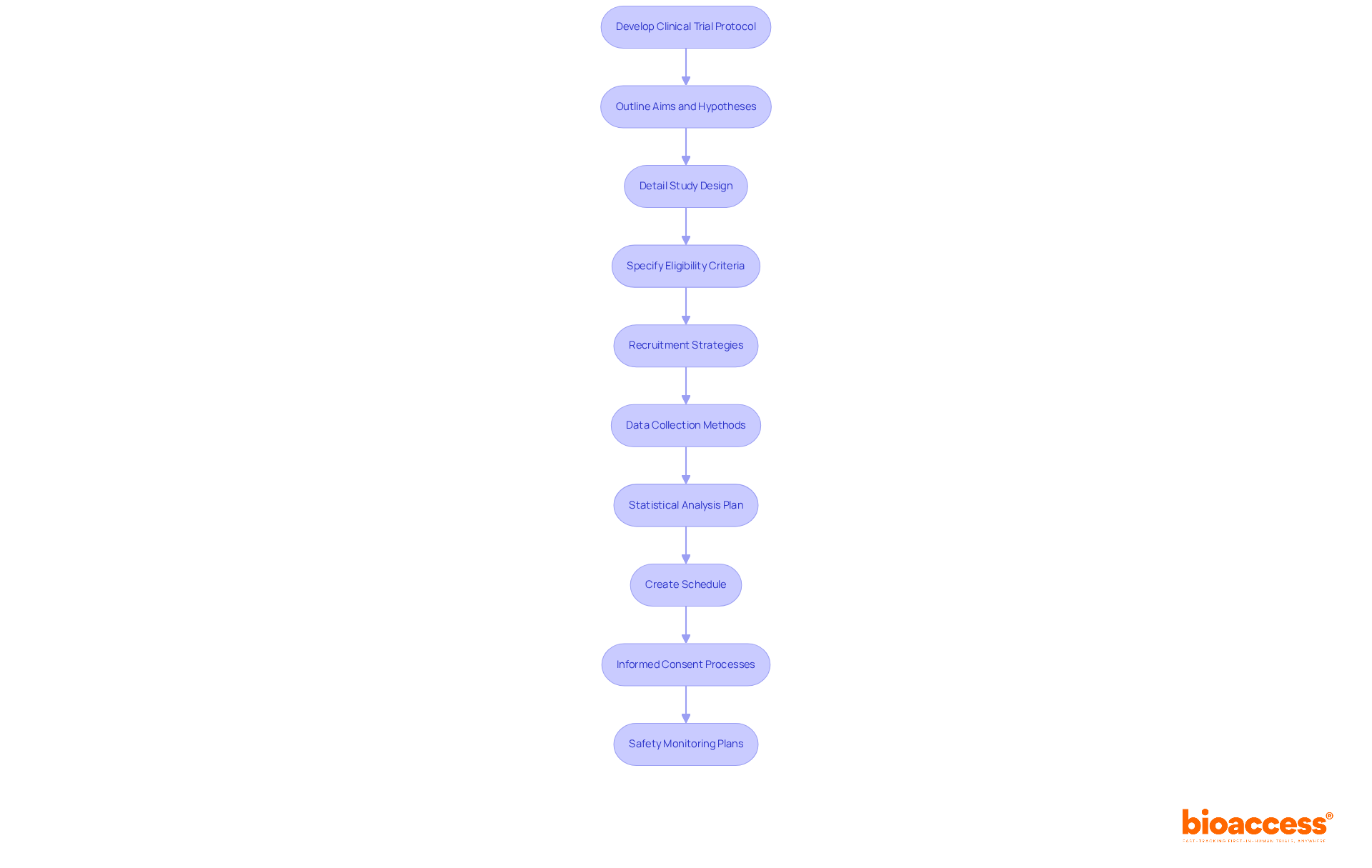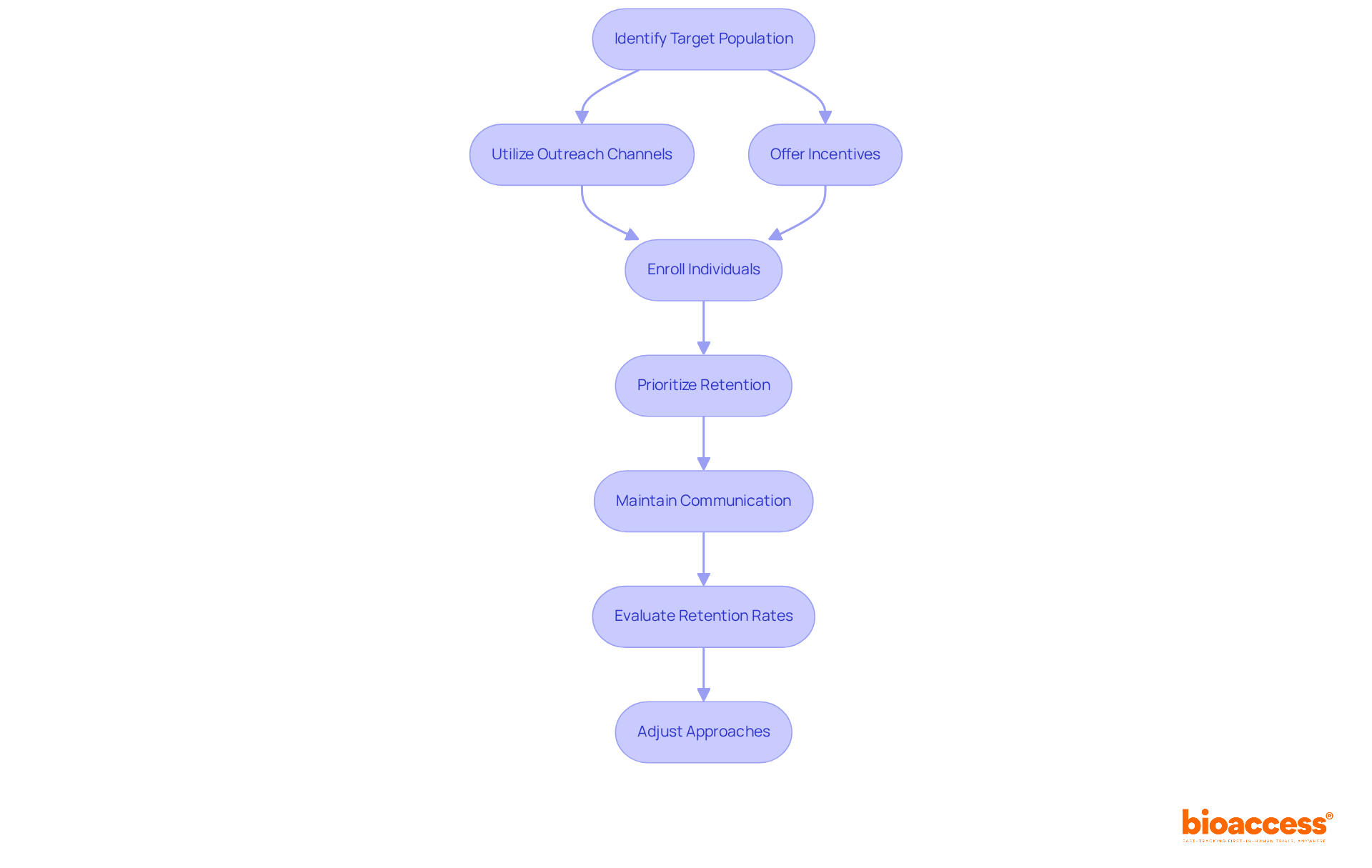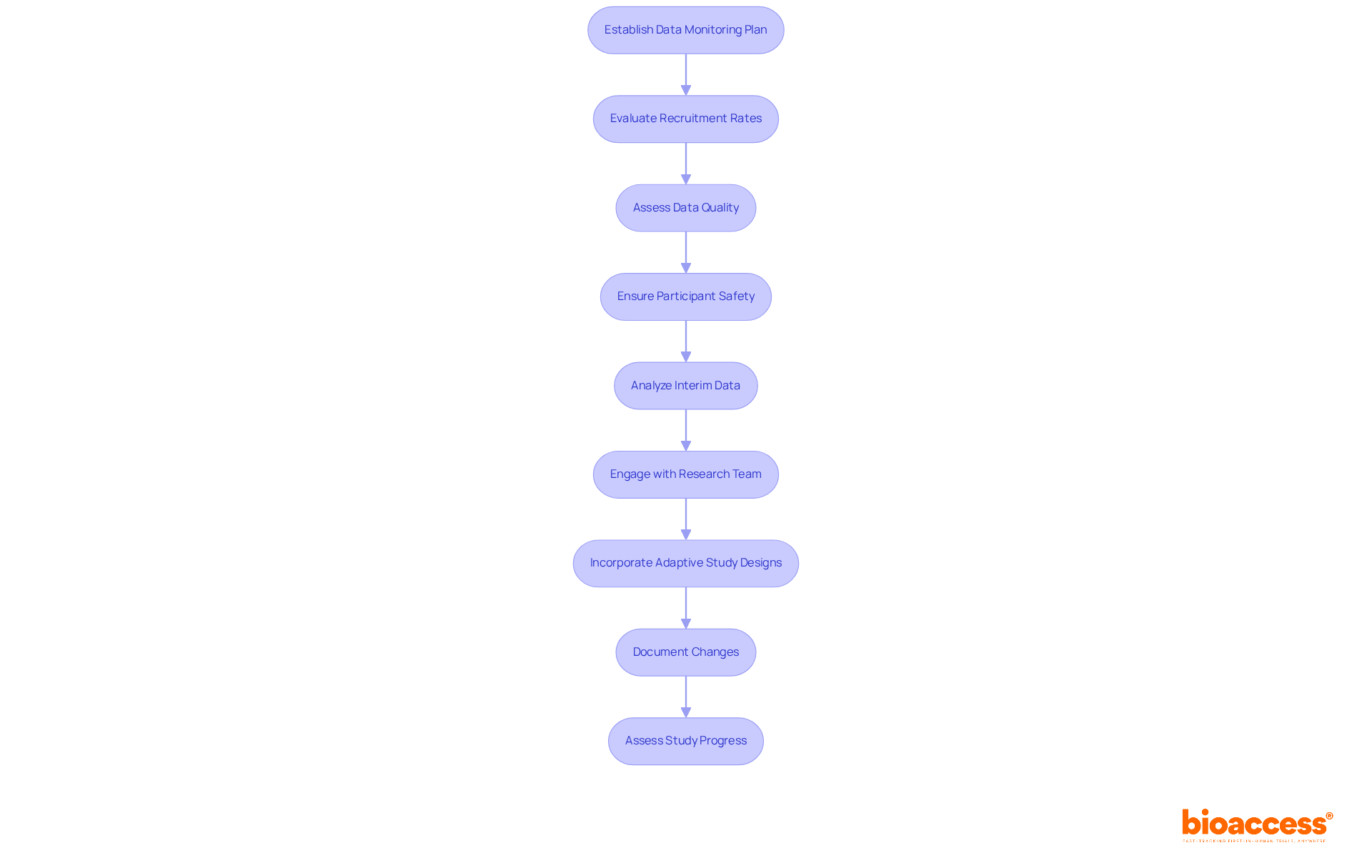


Successfully designing clinical trials involves several key steps:
Following these structured steps is essential for improving the likelihood of achieving reliable and compliant study outcomes. Furthermore, the article emphasizes the importance of expert consultation and adaptive methodologies in this process. By adhering to these principles, researchers can navigate the complexities of clinical trials with greater confidence and effectiveness.
Designing clinical trials is a complex yet crucial endeavor that significantly impacts the future of medical research and patient care. With nearly 90% of studies failing due to poor design, understanding the fundamental steps involved is essential for success.
This article delves into the intricacies of clinical trial design, offering insights into effective strategies for:
What are the key elements that can make or break a trial? How can researchers navigate the myriad challenges that lie ahead? These questions are pivotal as we explore the essential components that define successful clinical trials.
Successful designing clinical trials starts with a precise definition of the primary research question, which focuses on a specific health issue or hypothesis. For example, when evaluating a new medication, one might inquire, 'Does this medication enhance patient outcomes compared to standard treatment?' Subsequently, it is crucial to gather existing knowledge about the disease and current treatment modalities. This involves reviewing relevant literature, consulting industry experts, and navigating the regulatory landscape, including compliance with local authorities such as INVIMA in Colombia, which oversees medical device regulations.
Moreover, designing clinical trials requires selecting the appropriate research design, as options such as randomized controlled experiments, observational analyses, or adaptive frameworks each present distinct advantages and disadvantages. The design choice should align with the research objectives and available resources. Notably, approximately 90% of research studies fail, often due to inadequate designing clinical trials, which underscores the necessity of a well-structured strategy for study development. Engaging in comprehensive research management services, such as those offered by bioaccess, can facilitate feasibility assessments, site selection, setup, and project oversight, ensuring that your research is organized and compliant with regulatory standards.
Furthermore, the insights of experts like Oswaldo Amaya, MD, can provide valuable perspectives on conducting successful experiments in Latin America, encompassing essential elements such as reporting research status and managing adverse events. Collaboration in this field is not just beneficial; it is imperative for advancing clinical research effectively.

To develop a robust clinical research protocol, begin by clearly outlining the aims and hypotheses of the investigation. This foundational step establishes the direction for the entire experiment. Comprehensive sections should detail the study design, eligibility criteria for subjects, recruitment strategies, and data collection methods used in designing clinical trials. A well-structured statistical analysis plan is crucial; it must outline how to address missing data and potential confounders, ensuring the integrity of the results.
Create a schedule for each phase, from recruitment to data analysis, to ensure focus and accountability. Ethical considerations are paramount; therefore, incorporate thorough informed consent processes and safety monitoring plans to safeguard individuals involved.
Utilizing templates and guidelines from regulatory bodies, such as the FDA and ICH, can significantly enhance compliance with industry standards. Successful clinical study protocols in biopharma frequently follow these guidelines, showcasing the significance of designing clinical trials through organized planning. Studies indicate that protocols with clear objectives and well-defined eligibility criteria tend to achieve higher involvement and retention rates, ultimately leading to more dependable outcomes. Additionally, incorporating project management strategies and reporting processes will ensure that all aspects of the trial are monitored effectively, including compliance with import permits and the nationalization of investigational devices.
By adhering to these steps, you can create a thorough protocol that not only satisfies regulatory standards but also fosters trust and transparency among all participants.

To implement effective recruitment strategies, it is imperative to start by clearly identifying your target population and understanding their specific needs and concerns. Utilize a diverse array of outreach channels, including social media, healthcare providers, and community organizations, to maximize visibility. Offering incentives for participation, such as travel reimbursements or health screenings, can significantly enhance recruitment efforts. A notable example is GlobalCare Clinical Trials, LLC's partnership with bioaccess™, which has achieved over a 50% reduction in recruitment time and a retention rate exceeding 95% in Colombia.
Once individuals are enrolled, it is crucial to prioritize retention by maintaining regular communication. This involves offering updates on the progress of the examination and swiftly addressing any issues that individuals may encounter. Employ strategies such as personalized follow-ups, appointment reminders, and creating a supportive environment that fosters trust and engagement. Consistently evaluate retention rates, as data suggests that almost 90% of medical studies do not achieve their recruitment goals within the intended schedule, often due to high drop-out rates. Adjusting your approaches based on these evaluations is essential to ensuring that individuals remain dedicated throughout the study. For instance, implementing flexible scheduling or transportation assistance can significantly improve retention rates, as many eligible patients decline participation due to logistical challenges.
By concentrating on these customized methods and utilizing extensive research management services—including feasibility assessments, site selection, compliance evaluations, and project oversight—research teams can enhance satisfaction among subjects and ultimately improve results.

To effectively oversee and adjust your clinical study, establishing a robust data monitoring plan is essential. This plan should encompass regular evaluations of recruitment rates, data quality, and participant safety. Employing statistical methods to analyze interim data enables the identification of trends that may necessitate protocol adjustments. Engaging with your research team and stakeholders to discuss findings and potential changes is crucial for maintaining alignment with study objectives.
Consider designing clinical trials that incorporate adaptive study designs, allowing for modifications based on real-time data, such as adjusting sample sizes or treatment regimens. These designs enhance the project's responsiveness and increase the probability of achieving successful outcomes. Thorough documentation of all changes is vital, ensuring that all team members and regulatory bodies remain informed to maintain transparency and compliance.
With over 20 years of experience in Medtech, bioaccess offers expertise in managing Early-Feasibility, First-In-Human, Pilot, Pivotal, and Post-Market Follow-Up Studies in Latin America. Consistently assessing the study's progress and outcomes promotes ongoing enhancement, guaranteeing alignment with its goals and optimizing the potential for significant results. By prioritizing data monitoring and adaptive strategies, alongside the specialized support from bioaccess, you can enhance the overall quality and efficiency of designing clinical trials.

In conclusion, designing clinical trials is an intricate process that holds immense significance in advancing medical research and enhancing patient care. A well-executed trial can lead to groundbreaking discoveries, while a poorly designed one can result in wasted resources and missed opportunities. Understanding the essential components of clinical trial design—such as defining research questions, developing comprehensive protocols, implementing effective recruitment strategies, and continuously monitoring progress—forms the backbone of successful studies.
Key steps have been outlined throughout this article, emphasizing the importance of a meticulous approach to trial design. From selecting the appropriate research methodology to ensuring ethical considerations and participant safety, each aspect plays a critical role in the overall success of a clinical trial. Moreover, the emphasis on adaptive trial designs and ongoing data monitoring highlights the need for flexibility and responsiveness in research, allowing for adjustments that can significantly impact outcomes.
Given these insights, it is crucial for researchers to prioritize a structured and strategic approach to clinical trial design. By leveraging best practices, engaging with experts, and committing to continuous improvement, the potential for successful trials increases dramatically. As the landscape of medical research evolves, embracing these principles will not only enhance the quality of studies but also contribute to the broader goal of improving patient outcomes and advancing healthcare.
What is the first step in designing a clinical trial?
The first step is to precisely define the primary research question, which focuses on a specific health issue or hypothesis.
Why is it important to gather existing knowledge about the disease and treatment modalities?
Gathering existing knowledge is crucial for understanding the context of the research, which involves reviewing relevant literature, consulting industry experts, and navigating the regulatory landscape.
What are some regulatory authorities involved in clinical trials?
An example of a regulatory authority is INVIMA in Colombia, which oversees medical device regulations.
What types of research designs can be used in clinical trials?
Research designs include randomized controlled experiments, observational analyses, and adaptive frameworks, each with distinct advantages and disadvantages.
Why do many research studies fail?
Approximately 90% of research studies fail, often due to inadequate design of clinical trials, highlighting the necessity of a well-structured strategy for study development.
How can research management services assist in clinical trial design?
Research management services can facilitate feasibility assessments, site selection, setup, and project oversight, ensuring that the research is organized and compliant with regulatory standards.
Who can provide valuable insights into conducting successful experiments in Latin America?
Experts such as Oswaldo Amaya, MD, can provide valuable perspectives on conducting successful experiments, including elements like reporting research status and managing adverse events.
Why is collaboration important in clinical research?
Collaboration is imperative for advancing clinical research effectively, as it brings together diverse expertise and resources.